
Unlocking Academic Success: The Power of Academic Vocabulary Worksheets
In the intricate landscape of higher education and specialized fields, mastery of academic vocabulary is not merely an advantage; it is a prerequisite for comprehension, communication, and critical thought. Unlike everyday conversational English, academic language is precise, formal, and often abstract, requiring a distinct set of lexical tools to navigate complex texts, articulate sophisticated ideas, and engage in scholarly discourse. For many students, particularly those for whom English is a second language or those transitioning from less formal educational settings, this linguistic leap can be daunting. This is where Academic Vocabulary Worksheets emerge as an indispensable tool, offering structured, targeted, and repeatable practice essential for bridging the gap between passive recognition and active, confident use of academic language.
This article delves into the profound significance of academic vocabulary, explores the multifaceted role of Academic Vocabulary Worksheets in language acquisition, examines various types and design principles for effective worksheets, and outlines strategies for their successful implementation in both classroom and self-study environments.
The Cornerstone of Academic Proficiency: Why Academic Vocabulary Matters
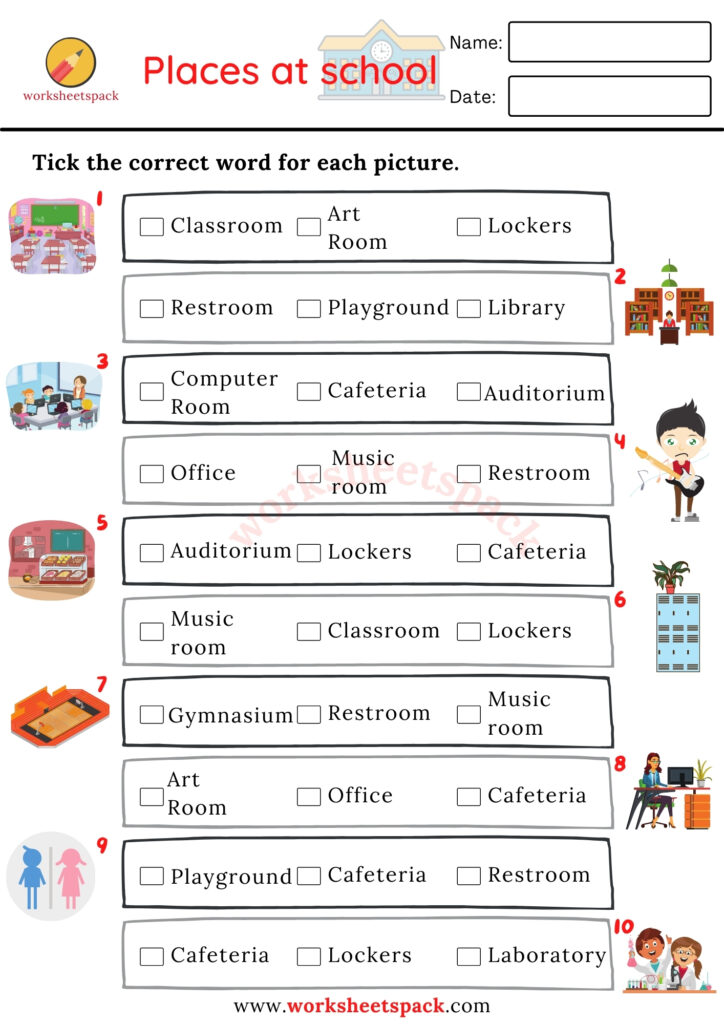
Academic vocabulary refers to the set of words frequently used across different academic disciplines, transcending specific subject matter. These "Tier 2" words, as defined by Isabel Beck, Margaret McKeown, and Linda Kucan in their work on vocabulary instruction, are crucial for understanding and producing academic discourse. Words like "analyze," "synthesize," "evaluate," "correlate," "hypothesize," "discern," and "articulate" are not typically part of daily conversation but are fundamental to academic tasks.

Mastering this vocabulary is paramount for several reasons:
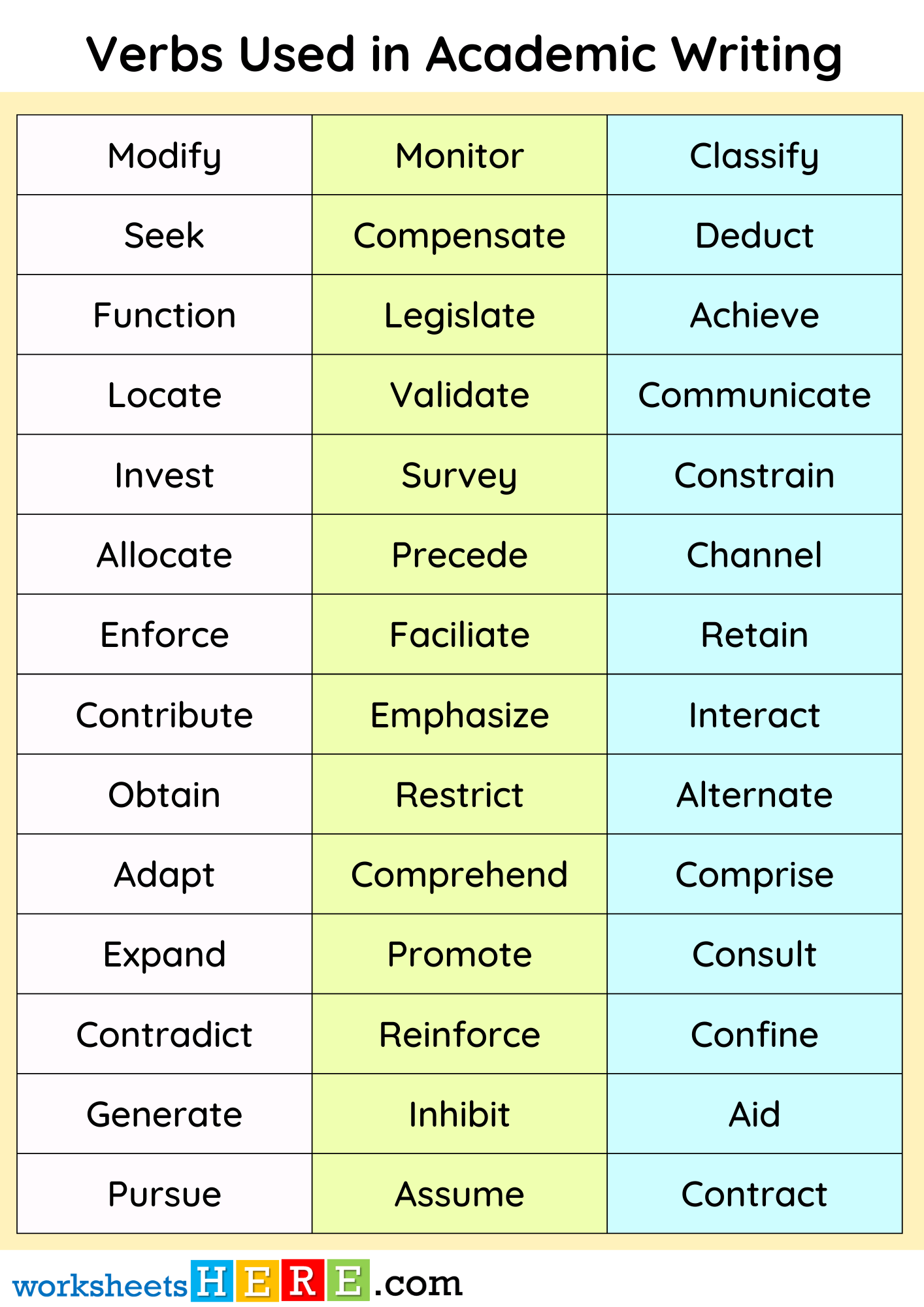
- Enhanced Reading Comprehension: Academic texts are dense with specialized terminology and complex sentence structures. A strong grasp of academic vocabulary allows students to accurately interpret meaning, identify main ideas, and understand nuanced arguments. Without it, reading becomes a laborious process of decoding individual words rather than comprehending concepts.
- Improved Writing Quality: Effective academic writing demands precision, clarity, and sophistication. Using appropriate academic vocabulary elevates the quality of essays, research papers, and reports, enabling students to express complex ideas with greater accuracy and impact. It moves writing beyond simplistic expressions to articulate deeper insights.
- Facilitated Critical Thinking: Academic vocabulary provides the linguistic framework for critical analysis, evaluation, and synthesis. Words like "critique," "deduce," "imply," and "substantiate" are not just words; they represent specific cognitive processes essential for higher-order thinking.
- Successful Participation in Academic Discourse: Whether in lectures, seminars, or discussions, students need to understand and use academic vocabulary to follow arguments, ask pertinent questions, and contribute meaningfully. It builds confidence in oral communication within academic settings.
- Preparation for Higher Education and Professional Life: Academic success often translates into professional success. Many professions require the ability to read complex documents, write professional reports, and communicate sophisticated ideas, all of which rely heavily on a strong academic vocabulary.

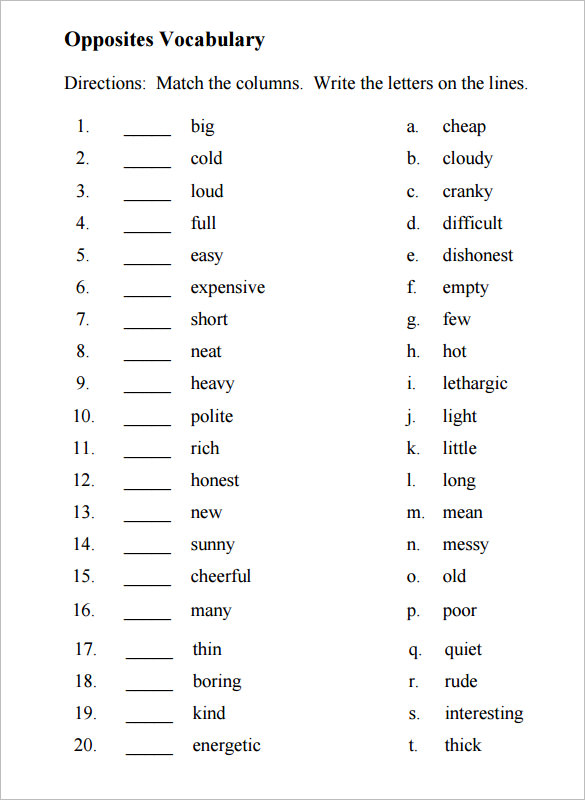
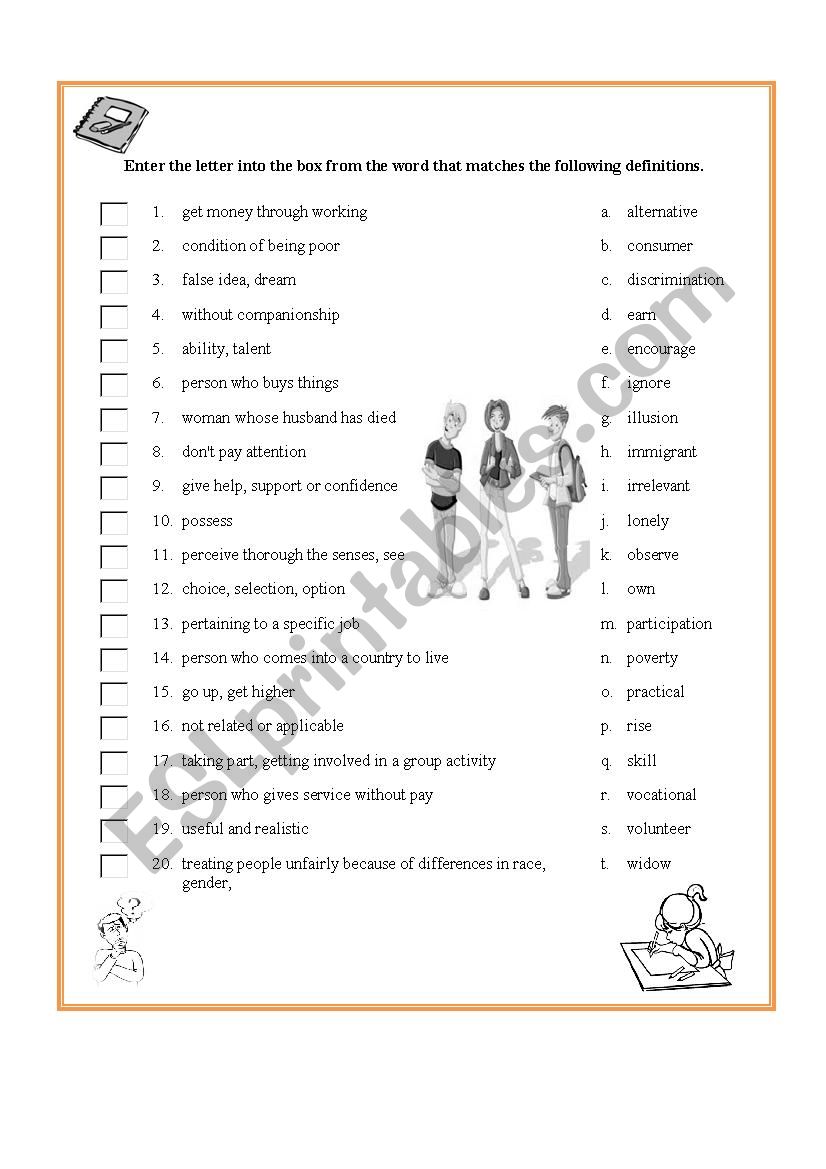
The Role of Academic Vocabulary Worksheets in Language Acquisition
Given the critical importance of academic vocabulary, how do students effectively acquire and internalize it? While exposure through extensive reading is vital, targeted practice is often necessary to solidify understanding and promote active use. This is precisely where Academic Vocabulary Worksheets play a pivotal role. They provide:
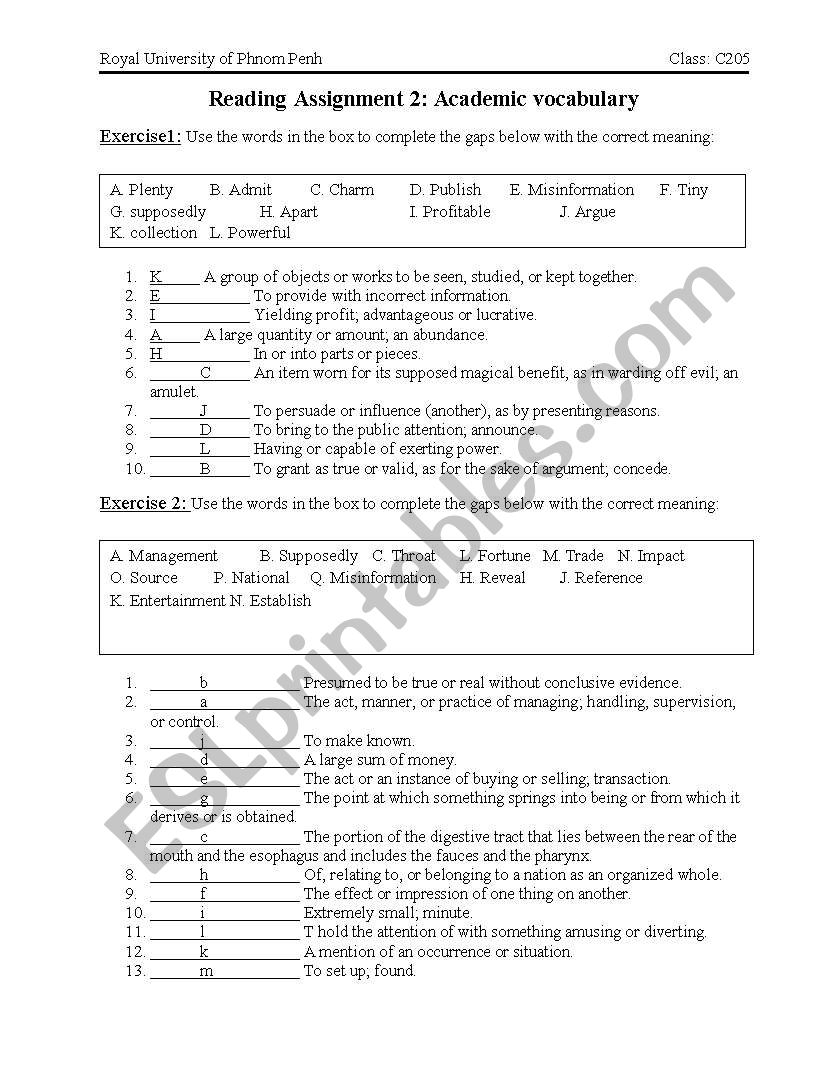
- Structured Practice: Worksheets break down the vast task of vocabulary acquisition into manageable, focused exercises.
- Targeted Learning: They allow educators (or self-learners) to concentrate on specific word lists, such as the Academic Word List (AWL) or discipline-specific terminology.
- Repetition and Reinforcement: Through varied exercises, words are encountered multiple times in different contexts, enhancing retention and recall.
- Bridging the Gap: Worksheets help transition words from passive recognition (knowing what a word means when seen) to active production (using the word correctly in speaking and writing).
- Assessment and Feedback: They offer a clear way to assess understanding and identify areas needing further attention, providing valuable feedback for learners.
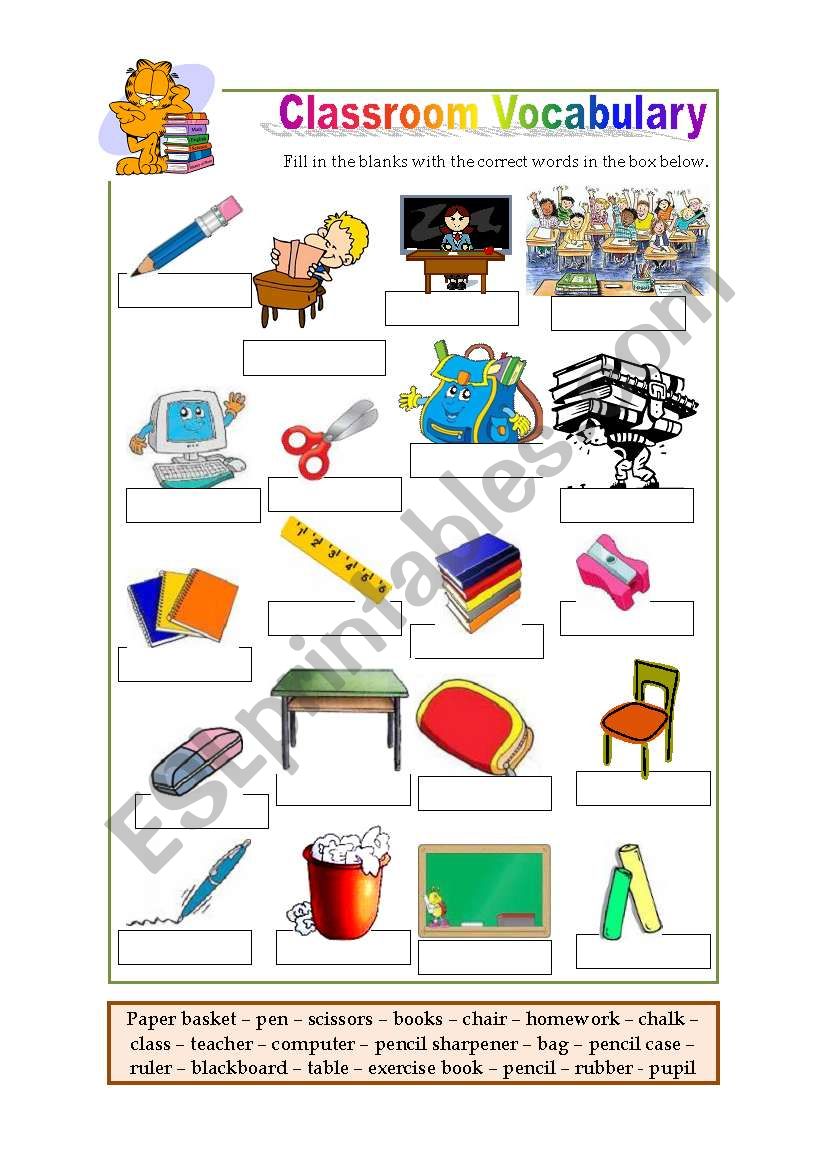
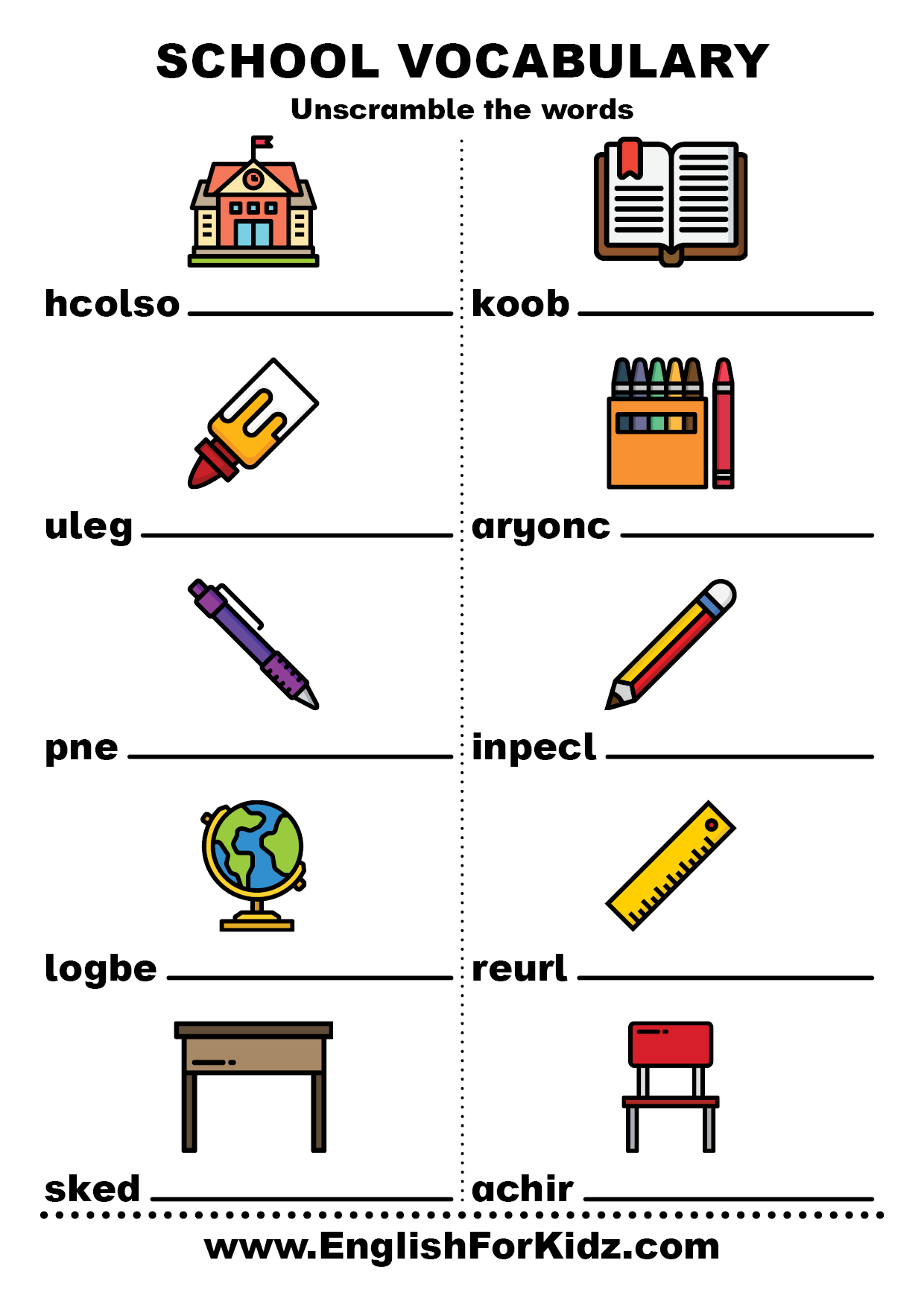
Types of Effective Academic Vocabulary Worksheets
The efficacy of Academic Vocabulary Worksheets lies in their variety and ability to cater to different learning styles and stages of acquisition. A well-rounded set of worksheets will move beyond simple definitions to promote deeper processing and application.
-
Basic Recognition & Recall:
- Matching: Pairing words with their definitions, synonyms, or antonyms.
- Fill-in-the-Blank: Completing sentences or short paragraphs with appropriate academic words from a word bank.
- Multiple Choice: Selecting the correct definition or the word that best fits a given sentence.
- True/False: Assessing understanding of a word’s meaning in a given context.
-
Contextual Understanding & Application:
- Sentence Completion: Requiring students to use the word in an original, grammatically correct sentence that demonstrates understanding of its meaning and appropriate usage.
- Cloze Passages: Filling in blanks in a longer text, forcing students to consider the semantic and syntactic context.
- Paragraph Writing: Prompting students to write a short paragraph using a set of target academic words, often related to a specific topic or concept.
- Summarizing/Paraphrasing: Using target words to summarize a short academic passage or paraphrase a complex sentence.
-
Deeper Processing & Analysis:
- Word Families/Derivatives: Exploring how a root word can change forms (e.g., "analyze," "analysis," "analytic"). This helps students understand morphology and expand their vocabulary efficiently.
- Prefixes, Suffixes, and Roots: Breaking down words to understand their component parts, which aids in deciphering new words.
- Semantic Mapping/Concept Webs: Visually organizing words by category, synonyms, antonyms, and related concepts. This helps students see relationships between words and build schemata.
- Collocation Exercises: Identifying words that frequently go together (e.g., "conduct research," "draw conclusions," "critical analysis"). This is crucial for natural-sounding academic English.
- Error Correction: Presenting sentences where academic words are used incorrectly and asking students to identify and correct the errors.
-
Critical Thinking & Discussion:
- Agree/Disagree Statements: Using target words to express agreement or disagreement with a statement, justifying their position.
- Debate Prompts: Providing a topic and requiring students to prepare arguments using specific academic vocabulary.
- Comparison/Contrast: Using academic terms to compare and contrast concepts, theories, or arguments.
Designing Effective Academic Vocabulary Worksheets
Creating high-quality Academic Vocabulary Worksheets requires careful thought to ensure they are engaging, challenging, and conducive to learning.
- Strategic Word Selection: Choose words that are high-frequency in academic contexts (e.g., from the AWL), relevant to the curriculum, or necessary for understanding specific concepts. Focus on Tier 2 words that have broad applicability.
- Clear and Concise Instructions: Students should easily understand what is expected of them for each exercise. Use simple language for instructions.
- Varying Activity Types: Mix different exercise formats to maintain student engagement and cater to diverse learning preferences. Avoid repetitive tasks that can lead to boredom.
- Contextualization is Key: Always present words in meaningful sentences, paragraphs, or short passages rather than in isolation. This helps students understand the nuances of meaning and usage.
- Gradual Difficulty and Scaffolding: Start with simpler recognition tasks and progressively move towards more complex application and critical thinking exercises. Provide support (e.g., word banks, sentence starters) where necessary, gradually removing it as students gain confidence.
- Authenticity: Where possible, use sentences or short excerpts from authentic academic texts (adapted for readability if necessary) to expose students to real-world usage.
- Visual Appeal and Layout: A clean, well-organized layout with adequate white space makes worksheets less intimidating and easier to navigate. Use clear fonts and headings.
- Include an Answer Key: For self-study or peer-checking, an answer key allows students to receive immediate feedback and learn from their mistakes.
Implementing Academic Vocabulary Worksheets Effectively
Worksheets are most effective when integrated thoughtfully into a broader learning strategy, rather than being used in isolation.
- Pre-Reading/Pre-Listening Activation: Use worksheets before students engage with a text or lecture to pre-teach essential vocabulary, activating prior knowledge and making comprehension easier.
- During-Reading/During-Listening Reinforcement: Design exercises that students can complete while reading or listening, encouraging them to pay attention to target words in context.
- Post-Reading/Post-Listening Consolidation: Use worksheets after exposure to text or audio to consolidate understanding, review vocabulary, and apply new words in different contexts.
- Integrate with Content: Connect vocabulary directly to the subject matter being studied. This makes the words more relevant and memorable.
- Encourage Collaborative Learning: Many worksheet activities (e.g., matching, discussion prompts, peer correction) can be done in pairs or small groups, fostering peer learning and communication.
- Provide Constructive Feedback: Go beyond simply marking answers right or wrong. Explain why an answer is incorrect and offer guidance on how to improve.
- Promote Active Use: The ultimate goal is for students to use the vocabulary. Follow up worksheets with speaking activities, debates, or writing assignments where students are explicitly encouraged to employ the newly learned words.
- Leverage Technology: Digital Academic Vocabulary Worksheets can offer interactive elements, instant feedback, and integration with online dictionaries or pronunciation tools, making learning more dynamic.
Conclusion
Academic vocabulary is the bedrock upon which academic success is built. It empowers students to read critically, write clearly, think deeply, and communicate effectively within the rigorous demands of higher education and professional life. While passive exposure is a start, active, targeted practice is what truly cements these words in a learner’s lexicon. Academic Vocabulary Worksheets, when thoughtfully designed and strategically implemented, provide precisely this crucial practice. They serve as a bridge, guiding students from a basic understanding of words to their confident and accurate application, ultimately unlocking their full potential in the academic arena and beyond. By investing in the creation and utilization of high-quality academic vocabulary worksheets, educators and learners alike are investing in the very foundation of intellectual growth and scholarly achievement.
